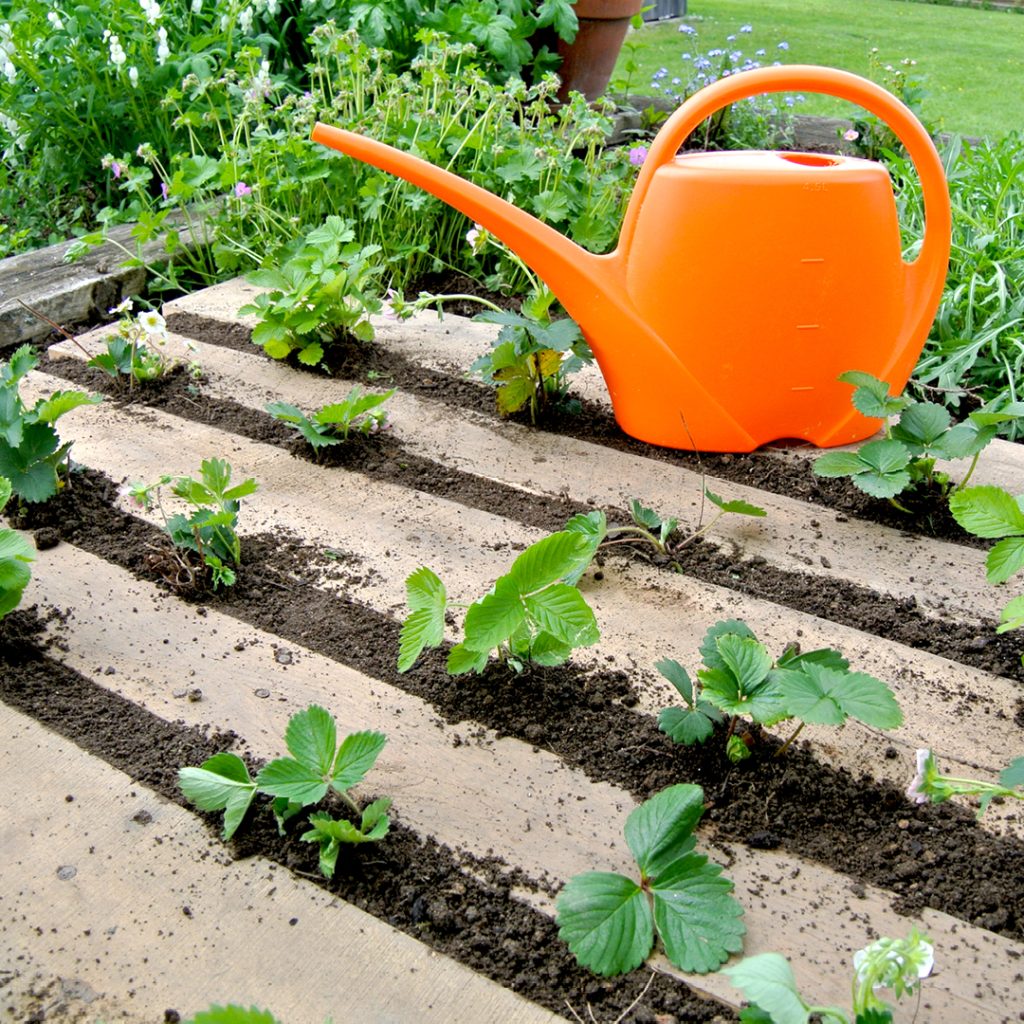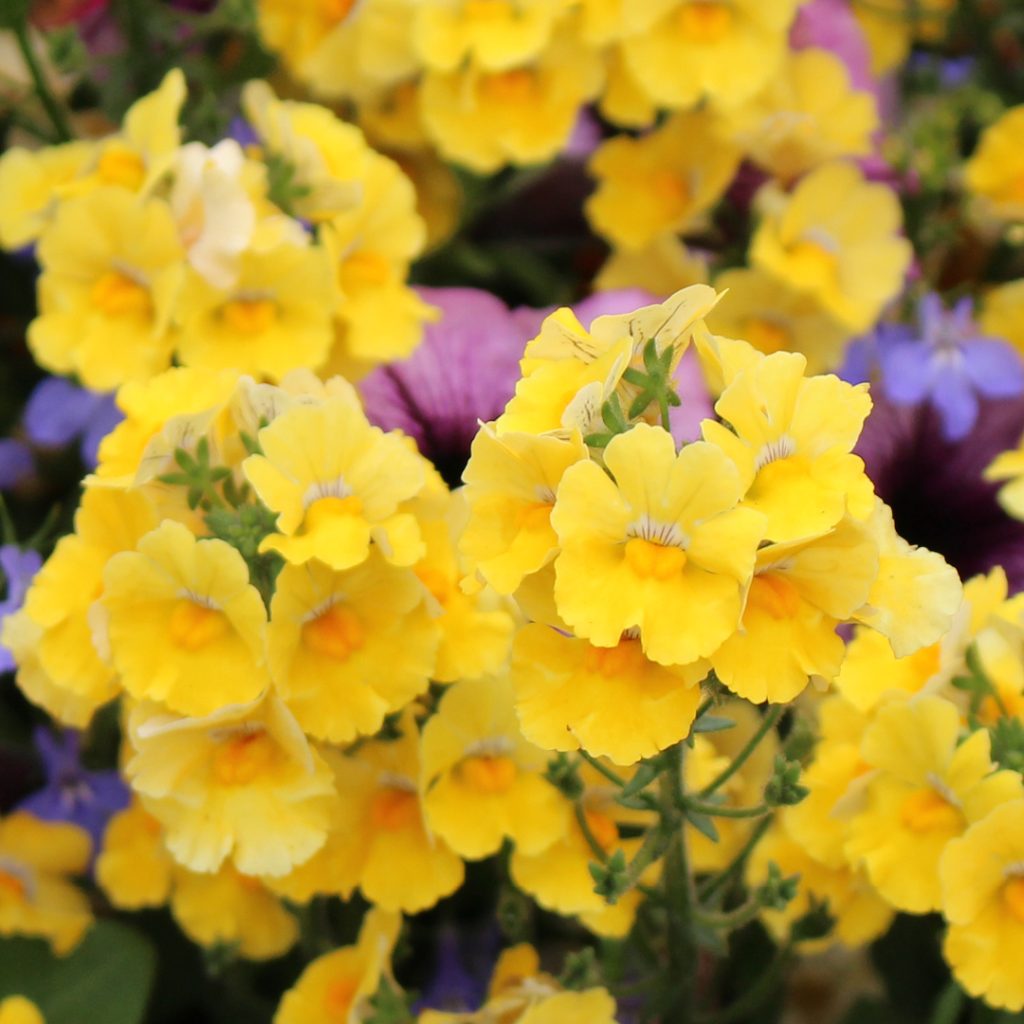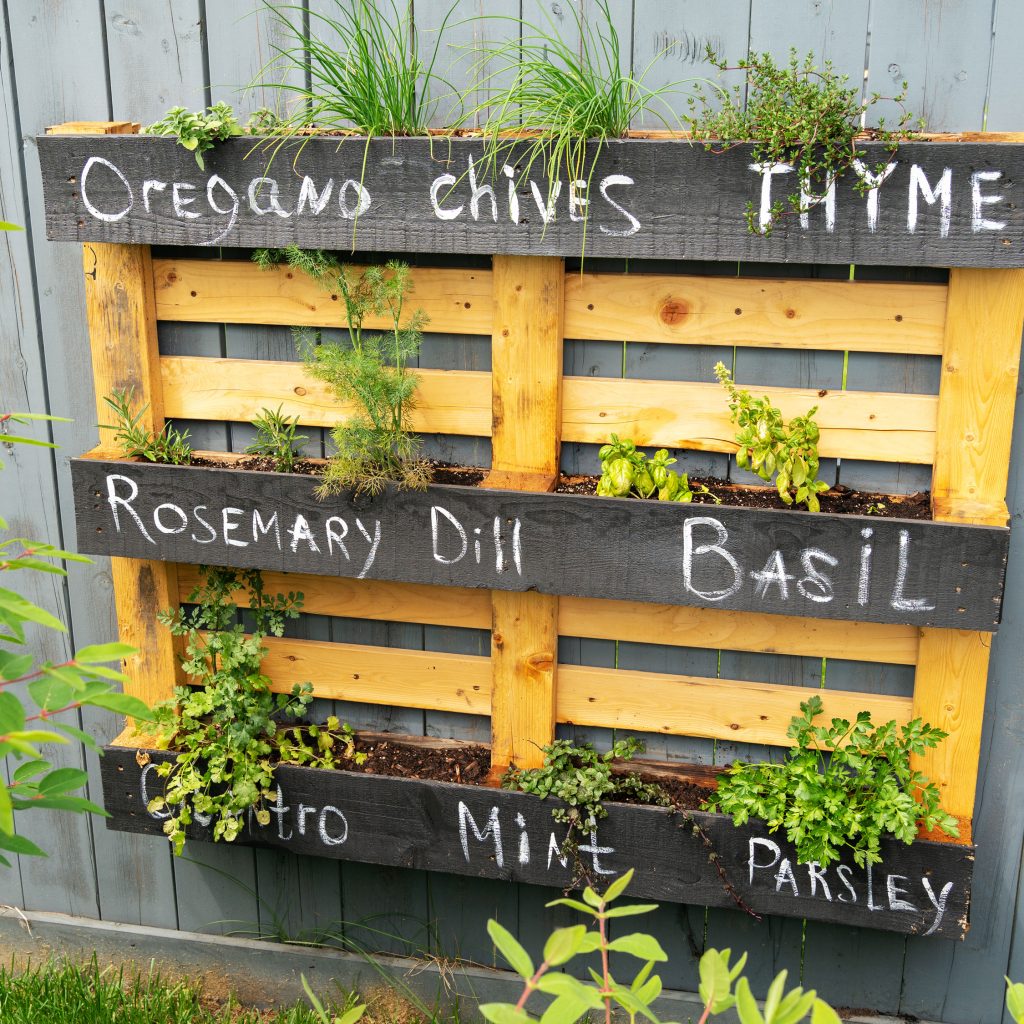Pallet gardening has emerged as a creative and sustainable way to transform unused wooden pallets into vibrant, space-efficient gardens. This gardening trend has gained popularity worldwide for its accessibility, affordability, and versatility. Regardless of where you are in your gardening journey, pallet gardening offers an innovative solution for cultivating herbs, vegetables, and flowers in urban or limited spaces.
Benefits of Pallet Gardening:
- Space-efficient: Ideal for small balconies, patios, rooftops, and urban settings where traditional gardening space is limited.
- Cost-effective: Repurposes discarded pallets into functional and aesthetically pleasing garden structures, saving money on traditional planters.
- Sustainable: Reduces waste by upcycling materials and encourages eco-friendly gardening practices such as composting and water conservation.
- Creative expression: Offers endless possibilities for personalization and design, from rustic-chic to modern minimalist styles.
- Educational and therapeutic: Provides opportunities for hands-on learning, stress relief, and connection with nature for individuals of all ages and abilities.
Getting Started
Before diving into pallet gardening, you’ll need to gather the necessary materials and plan your project. Here’s what’s required:
- Pallets: Choose sturdy, untreated wooden pallets in good condition. Look for pallets labeled with the “HT” stamp, which indicates they’ve been heat-treated rather than chemically treated.
- Tools: Gather basic tools such as a hammer, nails, screws, saw, drill, and sandpaper for disassembling and modifying the pallets.
- Soil and Plants: Invest in quality potting soil and compost and select plants suited to your climate and sunlight conditions. Herbs, lettuces, strawberries, succulents, and flowers can all thrive in pallet gardens.
- Optional Extras: Consider adding landscape fabric, weed barrier, and drip irrigation systems for enhanced efficiency and plant health.
Preparing and Customizing the Pallet:
- Disassemble the pallet: Carefully remove the top and bottom boards using a pry bar or hammer, ensuring minimal damage to the wood.
- Sand and clean: Smooth out rough edges and surfaces with sandpaper to prevent splinters and create a clean canvas for planting. If you plan to paint or stain the pallet, do so before planting, allowing it to dry completely.
- Customize as needed: Depending on your design preferences and gardening goals, leave the pallet intact for vertical gardening or dismantle it further to create individual planter boxes.
- Adding Landscape Fabric: Lay the pallet flat on the ground or work surface. Cut a piece of landscape fabric or weed barrier to fit the back and sides of the pallet, leaving excess fabric to fold over the edges. This will help prevent soil from falling out while allowing water drainage. Secure the fabric to the pallet using a staple gun or nails.
Orientating and Planting the Pallet Garden:
- Orientation: Determine whether you’ll place your pallet vertically against a wall or horizontally on the ground. Vertical gardens save space and offer a striking visual display, while horizontal gardens are more accessible for maintenance.
- Planting: Fill each compartment or slot with potting soil, leaving enough room for plant roots to establish and grow. You’ll arrange your chosen plants according to their spacing requirements and growth habits.
- Secure and stabilize: To prevent the pallet from tipping over, anchor it securely to a vertical wall or fence or add support legs and braces if it is to be planted horizontally. Ensure stability to withstand wind and weather conditions.
Maintenance Tips:
- Watering: Monitor soil moisture regularly and water your pallet garden as needed, typically once or twice a week, depending on weather conditions and plant preferences.
- Fertilizing: Regularly apply organic fertilizers or compost tea to replenish nutrients and promote healthy growth.
- Pruning and Harvesting: Trim overgrown foliage and deadhead flowers and harvest ripe produce to encourage continuous growth and productivity.
- Pest and Disease Control: Keep an eye out for pests like aphids and caterpillars, and promptly address any signs of disease with organic remedies or cultural practices.
Plant Selection
Creating a pallet garden is a fantastic way to grow, especially if you’re short on space. When planting veggies, herbs, and flowers in pallet gardens, you’ll want to consider compact plants with shallow root systems that thrive in containers. Here are five suggestions from each category that are perfect for pallet gardens.
5 Best Vegetables for Pallet Gardens
- Lettuce: Varieties like looseleaf, romaine, and butterhead thrive in shallow soil and can be continuously harvested.
- Spinach: Another leafy green that does well in compact spaces and provides a steady harvest.
- Radishes: These quick-growing root vegetables can be sown densely, making them perfect for pallet gardens.
- Green Onions: Also known as scallions, green onions are easy to grow and can be harvested at various stages.
- Cherry Tomatoes: Compact varieties of tomatoes, such as cherry or grape tomatoes, can be grown in pallet gardens with proper support or pruning.
5 Best Herbs for Pallet Gardens
- Basil: A popular culinary herb that thrives in containers, basil adds a burst of flavor to dishes and can be harvested regularly.
- Parsley: Both curly and flat-leaf varieties do well in pallet gardens and are versatile in cooking.
- Thyme: This aromatic herb is drought-tolerant and grows well in small spaces, making it ideal for pallet gardens.
- Chives: These are low-maintenance herbs that produce edible flowers and add a mild onion flavor to dishes.
- Rosemary: While it can grow quite large in the ground, rosemary can be pruned to stay compact in a pallet garden, providing fresh flavor to dishes.
5 Best Flowers for Pallet Gardens
- Calibrachoa (Million Bells): Calibrachoa is a beautiful and compact flowering plant that comes in a wide range of colors, including pink, purple, red, and yellow. It blooms profusely throughout the growing season and, due to its trailing growth habit, is well-suited for hanging baskets and pallet gardens.
- Portulaca (Moss Rose): Portulaca is a drought-tolerant annual that produces vibrant, colorful flowers in shades of pink, orange, yellow, and white. It’s low-growing and spreads quickly, making it an excellent choice for filling in gaps and adding a pop of color to your pallet garden.
- Nemesia: Nemesia is a charming annual flower that comes in a variety of shades, including purple, pink, yellow, and white. It has a compact growth habit and produces fragrant blooms that attract butterflies and bees. Nemesia thrives in containers and is perfect for adding beauty and fragrance to your pallet garden.
- Dwarf Zinnias: Zinnias are beloved for their bright, cheerful flowers and long-lasting blooms. Dwarf varieties like the ‘Profusion’ series are ideal for small spaces like pallet gardens. They come in various colors and require minimal maintenance, making them perfect for beginners.
- Verbena: Verbena is a versatile plant that works well in containers and garden beds. It produces clusters of small, colorful flowers in shades of purple, pink, red, and white. Verbena is drought-tolerant and attracts butterflies, making it a lovely addition to any pallet garden.
Pallet gardening transcends its humble origins as a DIY trend to become a sustainable solution for urban gardening challenges and a source of inspiration for eco-conscious growers worldwide. By harnessing the potential of reclaimed materials and embracing innovation, gardeners can cultivate beauty, abundance, and joy in even the smallest of spaces.













